Menu

The infamous “terrible twos”! It’s like they flip a switch, right? Well, don’t worry, it’s totally normal. This phase is about your little one asserting their independence and testing boundaries.
Tantrums and defiance are just their way of expressing frustration when they can’t quite communicate what they want or need.
The key is patience and consistency. Stay calm during tantrums, set clear boundaries, and offer choices when possible to give them a sense of control. And remember, it won’t last forever!
The term “terrible twos” is somewhat misleading because toddlers can experience this phase at different ages.This variability in onset is understandable, considering that toddlers often grapple with feelings of frustration, sadness, or fatigue due to their limited ability to communicate effectively.
For instance, they might struggle to express their reluctance to take a bath or their eagerness to play with a favourite toy.
During the “terrible twos,” some toddlers may exhibit more than typical defiance and moodiness. Your toddler might engage in violent outbursts, such as hitting, kicking, or even attempting to bite, especially in interactions with other children.
However, it’s important to note that not all children experience the “terrible twos,” even among those who do. The manifestation of behaviours can vary greatly.
Each child has their own individual personality and developmental milestones, so it’s essential to approach parenting with an understanding of your child’s unique needs and tendencies.
While parents commonly anticipate the onset of the “terrible twos” around their child’s second birthday, the behaviours associated with this stage often commence as early as 18 months and can persist until the age of 4.
The “terrible twos” phase can last until your child is 3 or 4. According to research, 20 percent of 2-year-olds experience one tantrum per day, while only 10 percent of 4-year-olds do.
Those epic tantrums should ease up as they better control their emotions and express themselves.
Many of your toddler’s desires, such as wanting to eat ice cream for dinner or refusing to put on their shoes, are requests you can’t always fulfil, leading to further frustration and bewilderment. Additionally, toddlers possess many emotions but lack the skills to regulate them appropriately.
These factors explain why the toddler years, particularly the so-called “terrible twos,” can pose significant challenges for you and your child. It’s a period of immense growth and development, but it also comes with its fair share of difficulties as your little one learns to navigate the complexities of their expanding world.
Many toddlers begin forming their identity and desire to accomplish tasks independently during this stage. When your toddler’s desire to do something doesn’t align with their ability, it often leads to frustration, “Expert says”. This gap between desire and ability can lead to frustration, disruptive behaviour (such as biting other children), and tantrums.
Around age 2, your little one is reaching some exciting milestones. They’re getting better at walking, jumping, and talking, and they’re starting to copy what they see others doing. They’re eager to help with tasks like tidying up or pretending to talk on the phone and are interested in following your daily routines. However, they’re still figuring out what’s safe and might test limits to see what they can get away with.
During this stage, your toddler is also testing their independence. They want to do things independently but still crave your presence and guidance. For instance, they may want to help with chores alone but also want you nearby to watch or lend a hand if needed. If things don’t go exactly as they wanted, like if you don’t meet their specific expectations, tantrums can quickly erupt.
During the “terrible twos,” you might notice that your child’s emotions are everywhere. One moment, they’re happy and giggling, and the next, they throw a tantrum. These mood swings are typical during this stage because your child is still learning to manage their emotions. They’re still figuring out how to express themselves and control their actions.
Your child might have moments where they clash with you, only to seek your comfort and approval right afterwards. They might also react strongly to insignificant situations because they’re still learning to regulate their emotions. It’s all part of their emotional development, and with time and guidance, they’ll learn to control their feelings more effectively.
In a study involving 2,001 mothers reporting on their child’s vocabulary and tantrum frequency, it was observed that children experiencing language delays exhibited nearly twice as many severe tantrums compared to those without such delays.
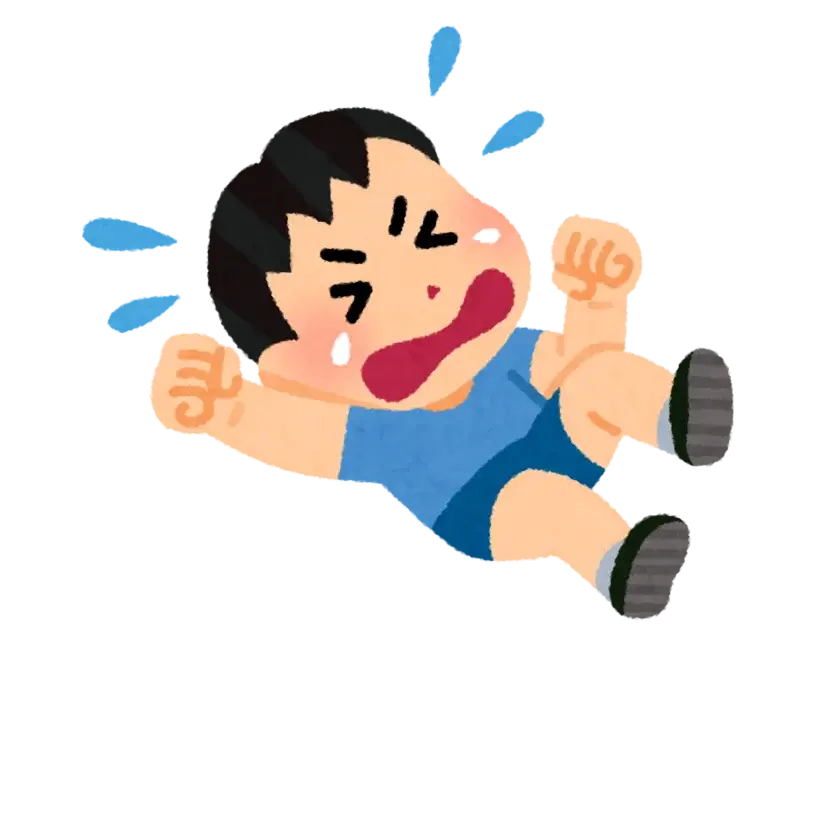
Young children often display emotional outburst also known as temper tantrum, characterised by crying, screaming, kicking, or other disruptive behaviours. Tantrums typically occur when a child is frustrated, overwhelmed, or unable to express their needs or desires effectively.
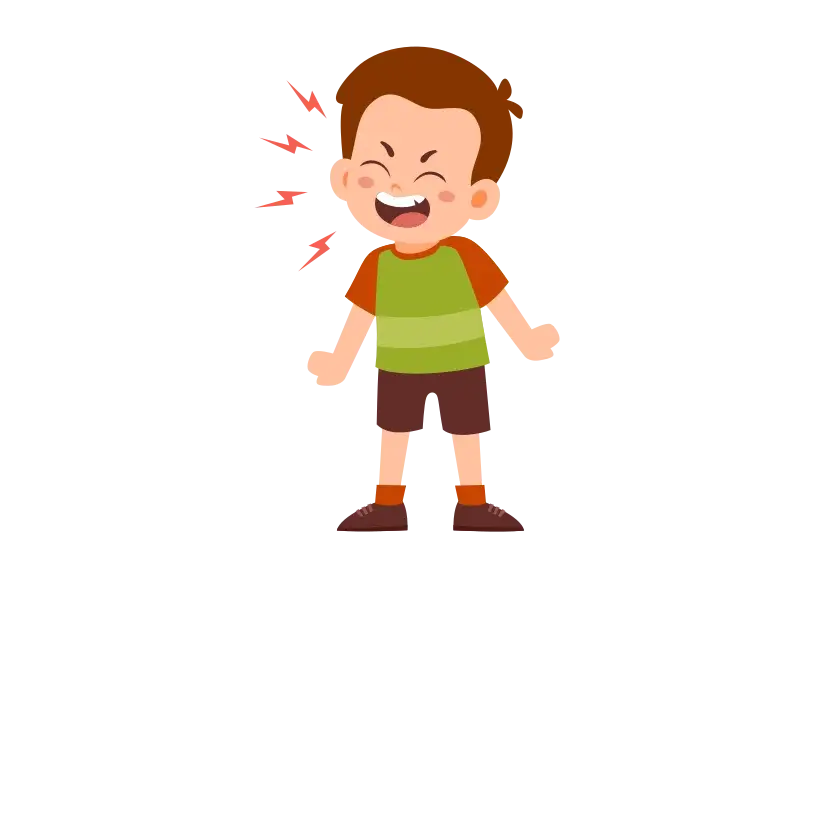
Some children may exhibit aggressive behaviours like biting, kicking, or hitting towards others when they’re frustrated or unable to communicate their needs effectively.
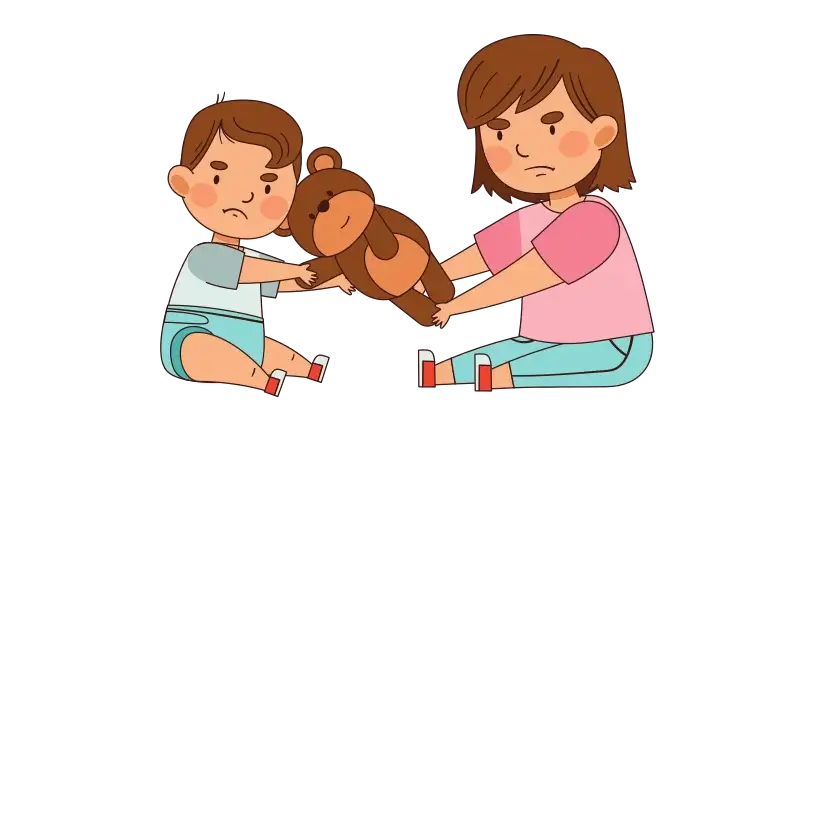
Toddlers in the “terrible twos” phase often act without much thought or consideration for consequences, such as grabbing toys from others or impulsively touching objects they shouldn’t.
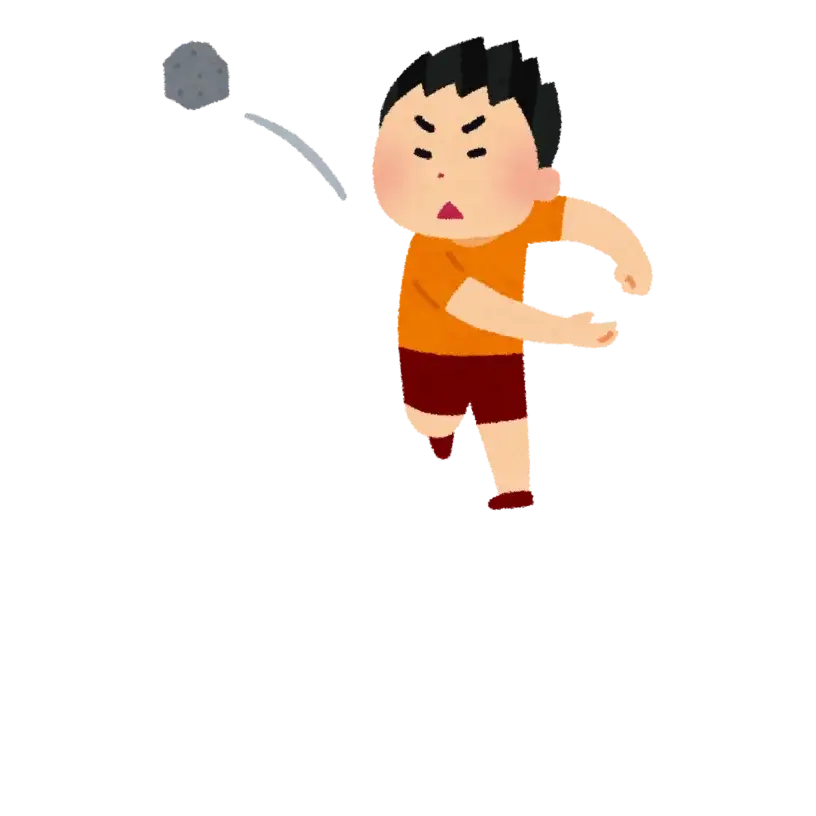
Some toddlers might throw objects out of frustration, curiosity, or simply to explore cause and effect, although they may not fully understand the potential dangers.
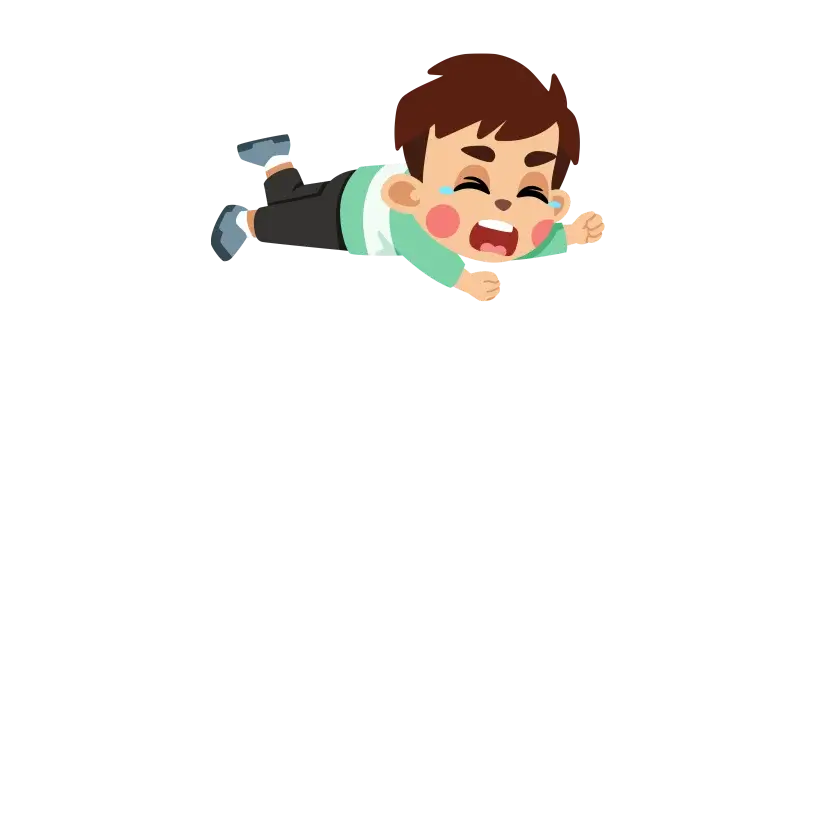
It’s not uncommon toddlers yell and scream when they are overwhelmed, upset, or trying to assert themselves. It’s their way of expressing strong emotions when they don’t have the words.
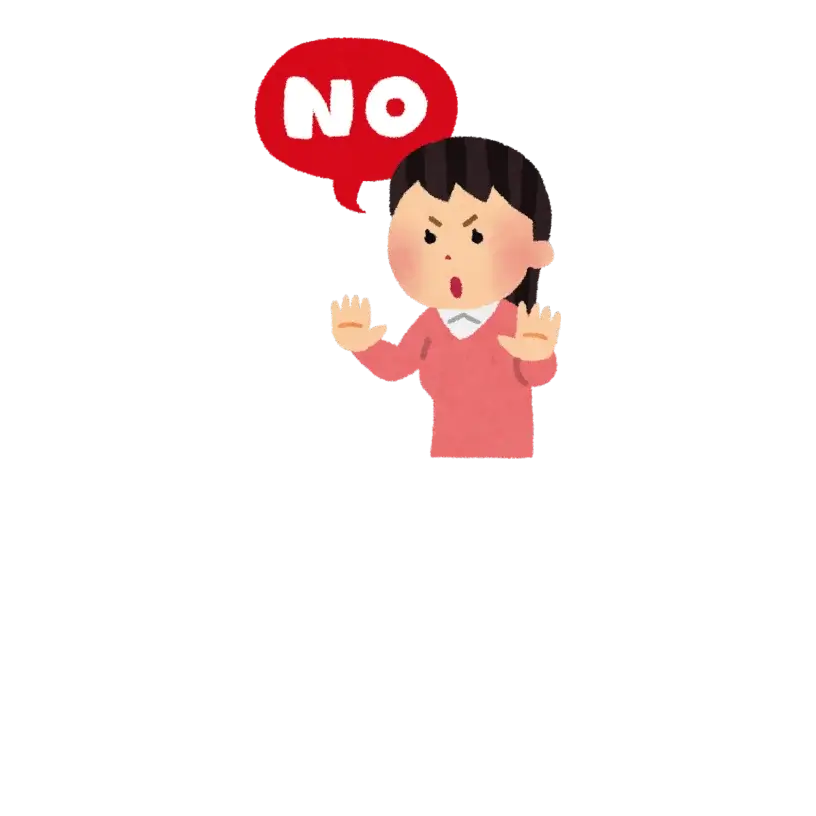
Toddlers often use the word “no” excessively, even in situations where it seems illogical. They enjoy asserting their independence and experimenting with boundaries, so it’s common for them to resist authority or express their preferences by saying “no” often.
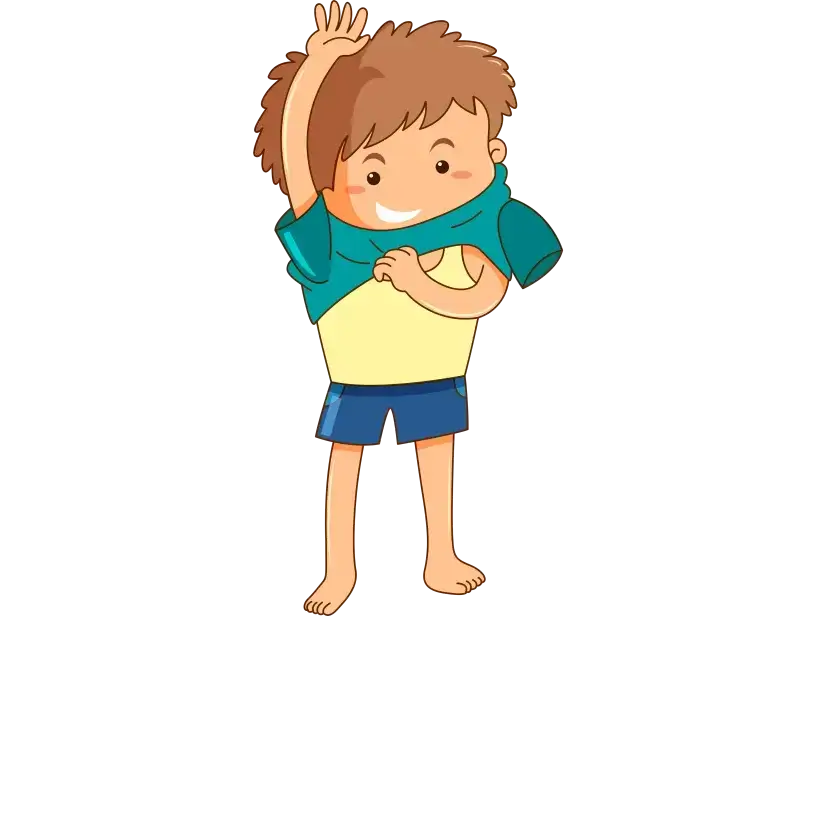
As your toddler strives for independence, they may insist on doing tasks independently, such as dressing themselves or feeding, even if they’re not quite ready or capable, leading to frustration and tantrums when they encounter difficulties.

Just because these behaviours are typical during the “terrible twos” doesn’t mean your child will exhibit all of them. Every child is unique, so yours might display some of these behaviours or even try out different ones as they go through their toddler years.
It’s all part of their development journey, so try not to worry too much if your child’s behaviour doesn’t match exactly what you’ve heard about the “terrible twos.” Just keep guiding and supporting them through this phase.

Young children often display emotional outburst also known as temper tantrum, characterised by crying, screaming, kicking, or other disruptive behaviours. Tantrums typically occur when a child is frustrated, overwhelmed, or unable to express their needs or desires effectively.

Some children may exhibit aggressive behaviours like biting, kicking, or hitting towards others when they’re frustrated or unable to communicate their needs effectively.

Toddlers in the “terrible twos” phase often act without much thought or consideration for consequences, such as grabbing toys from others or impulsively touching objects they shouldn’t.

Some toddlers might throw objects out of frustration, curiosity, or simply to explore cause and effect, although they may not fully understand the potential dangers.

It’s not uncommon toddlers yell and scream when they are overwhelmed, upset, or trying to assert themselves. It’s their way of expressing strong emotions when they don’t have the words.

Toddlers often use the word “no” excessively, even in situations where it seems illogical. They enjoy asserting their independence and experimenting with boundaries, so it’s common for them to resist authority or express their preferences by saying “no” often.

As your toddler strives for independence, they may insist on doing tasks independently, such as dressing themselves or feeding, even if they’re not quite ready or capable, leading to frustration and tantrums when they encounter difficulties.

Just because these behaviours are typical during the “terrible twos” doesn’t mean your child will exhibit all of them. Every child is unique, so yours might display some of these behaviours or even try out different ones as they go through their toddler years.
It’s all part of their development journey, so try not to worry too much if your child’s behaviour doesn’t match exactly what you’ve heard about the “terrible twos.” Just keep guiding and supporting them through this phase.
Read More About: What to expect in your 2-year -old
Establishing a consistent routine for meals and sleep is crucial for managing your child’s behaviour effectively. When your little one follows regular meal and sleep schedules, they are less likely to exhibit undesirable behaviours, especially when tired or hungry.
Explain calmly and firmly the consequences of misbehaviour. For instance, if toys aren’t picked up, explain they’ll be put away for the day. Follow through immediately and consistently, but never withhold essential needs like meals.
Prioritise listening to your child. Allow them to finish expressing themselves before offering solutions to any issues. Be attentive to recurring patterns of misbehaviour, such as jealousy, and engage in open conversations with your child about their feelings rather than solely relying on consequences.
In disciplining your child, attention is your most powerful tool. Reinforce good behaviours by giving attention to them and discourage unwanted behaviours by withdrawing attention.
Allowing your child to have some control by offering choices can help them feel empowered and reduce resistance to tasks. For instance, you could say, “Do you want to read a story before bed or play with your toys for a few minutes?” This way, your child feels involved in decision-making and is more likely to cooperate with the chosen option.
Distracting your child can be an effective strategy for managing their behaviour. When you notice them starting to whine or misbehave, point out something funny or interesting to shift their focus away from the negative behaviour. This can help prevent the situation from escalating and encourage more positive behaviour.
A time-out can be a useful discipline tool when a specific rule is broken. Start by warning your child that a time-out will follow if the behaviour continues. Then, calmly remind them of what they did wrong and remove them from the situation for a set time (1 minute per year of age is a good guideline).
For children aged three and up, try letting them lead their time-out by saying, “Go to time-out and come back when you feel ready and in control.” This approach helps them learn self-management skills and is also effective for older children and teens.
Steer clear of spanking and using harsh words as these are harmful and ineffective in correcting children’s behaviour. The American Academy of Pediatrics emphasises the importance of teaching good behaviour rather than punishing bad behaviour. Research shows that physical punishment, yelling, and shaming do not effectively correct behaviour and can harm a child’s long-term physical and mental well-being.
Establishing a consistent routine for meals and sleep is crucial for managing your child’s behaviour effectively. When your little one follows regular meal and sleep schedules, they are less likely to exhibit undesirable behaviours, especially when tired or hungry.
Explain calmly and firmly the consequences of misbehaviour. For instance, if toys aren’t picked up, explain they’ll be put away for the day. Follow through immediately and consistently, but never withhold essential needs like meals.
Prioritise listening to your child. Allow them to finish expressing themselves before offering solutions to any issues. Be attentive to recurring patterns of misbehaviour, such as jealousy, and engage in open conversations with your child about their feelings rather than solely relying on consequences.
In disciplining your child, attention is your most powerful tool. Reinforce good behaviours by giving attention to them and discourage unwanted behaviours by withdrawing attention.
Allowing your child to have some control by offering choices can help them feel empowered and reduce resistance to tasks. For instance, you could say, “Do you want to read a story before bed or play with your toys for a few minutes?” This way, your child feels involved in decision-making and is more likely to cooperate with the chosen option.
Distracting your child can be an effective strategy for managing their behaviour. When you notice them starting to whine or misbehave, point out something funny or interesting to shift their focus away from the negative behaviour. This can help prevent the situation from escalating and encourage more positive behaviour.
A time-out can be a useful discipline tool when a specific rule is broken. Start by warning your child that a time-out will follow if the behaviour continues. Then, calmly remind them of what they did wrong and remove them from the situation for a set time (1 minute per year of age is a good guideline).
For children aged three and up, try letting them lead their time-out by saying, “Go to time-out and come back when you feel ready and in control.” This approach helps them learn self-management skills and is also effective for older children and teens.
Steer clear of spanking and using harsh words as these are harmful and ineffective in correcting children’s behaviour. The American Academy of Pediatrics emphasises the importance of teaching good behaviour rather than punishing bad behaviour. Research shows that physical punishment, yelling, and shaming do not effectively correct behaviour and can harm a child’s long-term physical and mental well-being.
While tantrums and defiance during the “terrible twos” are typical, if you find the behaviour overwhelming or unmanageable, consider discussing your concerns with your child’s paediatrician. You can also seek professional help if teachers or caregivers suggest something is wrong or notice your child is:
Although having temper tantrums is normal, if they get intense, lasting 15 minutes or more, or if your child starts hurting themselves or others, it’s time to chat with your doctor. And if tantrums seem to drag on past your kiddo’s fifth birthday, it’s worth bringing up with your paediatrician. They’re there to help!
From a parent’s viewpoint, the “terrible twos” can be tough because your child might be moody, rebellious, and have tantrums when things don’t go their way. It’s all part of their development, but it can be exhausting. Remember, you’re not alone in this journey!
During the “terrible twos,” tantrums are common and can last until your child is about 3-years old. As they grow and develop, these tantrums usually start to decrease. If you notice regular tantrums persisting beyond this age, it’s a good idea to talk to your child’s healthcare provider to ensure necessary support or guidance.
During the “terrible twos,” it’s typical for children to display behaviours such as acting more independently and defiantly, behaving selfishly, experiencing emotional outbursts like tantrums, and having mood swings. One moment, they may cling to you, seeking comfort and reassurance; the next, they may throw a tantrum when they don’t get their way.
Remember that it’s essential to provide comfort and reassurance when your child seeks it, helping them feel secure and understood.
While the “terrible twos” phase may feel never-ending, it will eventually ease up. As your child grows and develops, they’ll become better at understanding rules, expressing their needs, and realising minor issues, they’ll learn that not getting their preferred toy or snack doesn’t signify the end of the world.
It’s all part of their learning journey, and with time and patience, you’ll both get through this challenging phase together.
After the challenging “terrible twos,” your child enters a phase known as the “threenagers” or “fascist fours.” While every child is different, tantrums and negative behaviours generally become less frequent as they grow older and develop better ways to communicate and solve problems. Your child’s vocabulary expands at ages 3 and 4, making expressing themselves easier.
They also become more independent and enjoy imaginative play, like pretending to be superheroes or princesses. Plus, they start to understand sharing and cooperation better, which can lead to smoother interactions with other kids. So, while there may still be some bumps along the way, you can expect more harmony and cooperation as they move beyond the “terrible twos.”
While the “terrible twos” phase is a common developmental stage for many children, not all children experience it in the same way or to the same extent. Some children may go through this phase with minimal behavioural challenges, while others may exhibit more pronounced tantrums and defiance.
Additionally, the timing and duration of the “terrible twos” phase can vary from child to child. However, many children experience some degree of increased assertiveness, independence, and boundary-testing during this stage of development.
Remember that each child is unique, So, if your child’s behaviour during this time seems particularly challenging, know that you’re not alone, and it’s likely just a phase they’re going through on their journey of growth and development.
From a parent’s viewpoint, the “terrible twos” can be tough because your child might be moody, rebellious, and have tantrums when things don’t go their way. It’s all part of their development, but it can be exhausting. Remember, you’re not alone in this journey!
During the “terrible twos,” tantrums are common and can last until your child is about 3-years old. As they grow and develop, these tantrums usually start to decrease. If you notice regular tantrums persisting beyond this age, it’s a good idea to talk to your child’s healthcare provider to ensure necessary support or guidance.
During the “terrible twos,” it’s typical for children to display behaviours such as acting more independently and defiantly, behaving selfishly, experiencing emotional outbursts like tantrums, and having mood swings. One moment, they may cling to you, seeking comfort and reassurance; the next, they may throw a tantrum when they don’t get their way.
Remember that it’s essential to provide comfort and reassurance when your child seeks it, helping them feel secure and understood.
While the “terrible twos” phase may feel never-ending, it will eventually ease up. As your child grows and develops, they’ll become better at understanding rules, expressing their needs, and realising minor issues, they’ll learn that not getting their preferred toy or snack doesn’t signify the end of the world.
It’s all part of their learning journey, and with time and patience, you’ll both get through this challenging phase together.
After the challenging “terrible twos,” your child enters a phase known as the “threenagers” or “fascist fours.” While every child is different, tantrums and negative behaviours generally become less frequent as they grow older and develop better ways to communicate and solve problems. Your child’s vocabulary expands at ages 3 and 4, making expressing themselves easier.
They also become more independent and enjoy imaginative play, like pretending to be superheroes or princesses. Plus, they start to understand sharing and cooperation better, which can lead to smoother interactions with other kids. So, while there may still be some bumps along the way, you can expect more harmony and cooperation as they move beyond the “terrible twos.”
While the “terrible twos” phase is a common developmental stage for many children, not all children experience it in the same way or to the same extent. Some children may go through this phase with minimal behavioural challenges, while others may exhibit more pronounced tantrums and defiance.
Additionally, the timing and duration of the “terrible twos” phase can vary from child to child. However, many children experience some degree of increased assertiveness, independence, and boundary-testing during this stage of development.
Remember that each child is unique, So, if your child’s behaviour during this time seems particularly challenging, know that you’re not alone, and it’s likely just a phase they’re going through on their journey of growth and development.
1. American Academy of Pediatrics: What’s the Best way to Discipline my Child?
2. Cleveland: Tips to Help you Survive Your Toddler’s ‘Terrible Twos’
3. Hughes, C., Devine, R.T., Mesman, J. and Blair, C., 2020. Understanding the terrible twos: A longitudinal investigation of the impact of early executive function and parent–child interactions. Developmental Science, 23(6), p.e12979.
4. Journal of American Academy of Nurse Practitioner: Assessment, management, and prevention of childhood temper tantrums
5. Manning, B.L., Roberts, M.Y., Estabrook, R., Petitclerc, A., Burns, J.L., Briggs-Gowan, M., Wakschlag, L.S. and Norton, E.S., 2019. Relations between toddler expressive language and temper tantrums in a community sample. Journal of Applied Developmental Psychology, 65, p.101070.
© Mindsmaking 2024